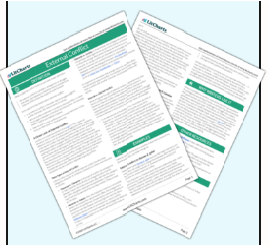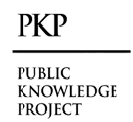Here to Stay: Implementation of Tele-Emergency Medicine in a High Volume, Health Care network in Pakistan
Abstract
To the Editor,
Emergency Medicine (EM) is cardinal to any health care system. Pakistan is a low-and-middle income country (LMIC) with a rudimentary health care infrastructure, where EM is underprioritized; plagued by multiple challenges in the form of a mismatch between demand and scarce resources, including untrained personnel.1 Pakistan is home to 235,824,8622 inhabitants and World Health Organization (WHO) reports one physician/1351 and one nurse/ 3225 individuals.3 Despite 75% of the Pakistani population living in rural and remote areas, there is a major disparity in health care resource distribution with only 22% of doctors serving in these under-privileged areas.3,4 This is augmented by delayed transfer to urban centers of the critically ill patients, culminating in high morbidity and mortality. Amidst these challenges, Emergency Departments (ED) in Pakistan face the dilemma of overcrowding, prolonged waiting times and length of stay (more than ten-hour in 41% and more than four hours in 16% patients) with bounce-backs.5,6 Poor performance on these key indicators affect the quality of care and patient satisfaction.6
EM was recognized as a specialty in Pakistan more than two decades ago. Presently, only 15 accredited residency institutes and 35 supervisors at the College of Physicians and Surgeons of Pakistan (CPSP) are training approximately 200 EM residents. Novel solutions are mandated in the background of these constrained resources and dearth of trained personnel. Telemedicine (TM) has been advocated for its ability to utilize technology to provide online health consultations to patients in remote areas.7,8 TM is a complementary system, through which rural health care facilities may be able to access experts from urban centers.9,10 TM has been utilized in EDs, neurology, cardiology and in provision of acute and critical care consultations; depicting promising outcomes.11-15 Tele-Emergency Medicine (Tele-EM) has also proven beneficial in improving ED through put with Hanson Hsu et al. reporting median 64 (42.6 -93.6) in TM and 134 min (90.6 -196.8) in Standard pathway (p= 0.001) with a reduction in 72-hour ED re-visits 3.4% and 3% (p=0.303) respectively.12 Similarly, Greenwald PW et al. reported a median ED LOS of 28 min in TM pathway, versus 60 min for standard pathway (p<0.001).13 Though , Pediatric ED TM consultations16, 17 have been established in (Blinded), this avenue has not been explored in adult EDs till date.
Indus Hospital and Health Network (IHHN) is a philanthropic, private sector health care network that provides quality healthcare, free-of-cost to millions of deserving patients through its countrywide footprint of fourteen hospitals, with one of its busiest centers located in Korangi district, Karachi, Pakistan. The ED, (IHHN), has robust educational programs like Certification Program in Emergency Medicine (CPEM)18, Foundation Program in Pediatric Emergency Medicine (F-PEM) and the national accredited EM residency program through which EM physicians are educated nationwide, in an effort to bridge the existing gap.
As a step forward, an innovative Tele- EM project has been implemented across two IHHN network District Head Quarter hospitals in the cities of Badin (rural city of Sindh Province) and Gwadar (rural district of Baluchistan province). Qualified Emergency Physicians from ED, IHHN, provide online consultations for high acuity adult patients to these remote areas through 24/7 real -time, video-based consultations.
It is our hope that this endeavor will provide robust EM care and optimize management of acute emergencies, alongside training EM physicians on ground in Badin and Gwadar. This will expedite appropriate patient disposition and translate in reduced ED waiting times and length of stay, bounce back and improve patient satisfaction. Through Tele-EM, we aim; for not only capacity building of physicians and nurses, but empowerment of our network hospital workforce. It is our objective to see improvement in diagnosis and effective management of acute emergencies, provision of high-quality care and enforcement of safe transfer practices. With published literature depicting propitious results;14-17 it is our hope that the pilot Tele – EM project at IHHN will provide EDs in low- and middle-income countries (LMICs) with a generalizable model to improve patient outcome.
Grant and Financial support: None
Conflict of interest: None
Use of AI in scientific writing: None
Downloads
References
Lin JY, Ahmed S, Brander C. Breadth of emergency medical training in Pakistan. Prehosp Disaster Med. 2013;28(2):179-183.
World Population Review 2019 [Updated 19,October]. Available From: Https://Worldpopulationreview.Com
Ullah N, Khan P, Sultana N, et al. A telemedicine network model for health applications in Pakistan: Current status and future prospects. International Journal of Digital Content Technology and its Applications. 2009;3(3):149-155.
Baig MA, Mian A, Najeed F, et al. Overcrowding in the emergency departments: Challenges and opportunities for improvement. J Pak Med Assoc. 2015;65(12):1344-1345.
Rehmani R. Emergency section and overcrowding in a university hospital of Karachi, Pakistan. J Pak Med Assoc. 2004;54(5):233-237.
Boudi Z, Lauque D, Alsabri M, et al. Association between boarding in the emergency department and in-hospital mortality: A systematic review. PLoS One. 2020;15(4):e0231253. Published 2020 Apr 15.
Ward MM, Jaana M, Natafgi N. Systematic review of telemedicine applications in emergency rooms. Int J Med Inform. 2015;84(9):601-616.
Ekeland AG, Bowes A, Flottorp S. Effectiveness of telemedicine: a systematic review of reviews. Int J Med Inform. 2010;79(11):736-771.
Paré G, Jaana M, Sicotte C. Systematic review of home telemonitoring for chronic diseases: the evidence base. J Am Med Inform Assoc. 2007;14(3):269-277.
Paré G, Trudel MC, Jaana M, et al. Synthesizing information systems knowledge: A typology of literature reviews. Information & Management. 2015;52(2):183-199.
Field MJ. Telemedicine: A guide to assessing telecommunications for health care. Published online 1996.
Hsu H, Greenwald PW, Clark S, et al. Telemedicine Evaluations for Low-Acuity Patients Presenting to the Emergency Department: Implications for Safety and Patient Satisfaction. Telemed J E Health. 2020;26(8):1010-1015.
Greenwald PW, Clark S, Hsu H, et al. 328 A Path to Telemedicine: An Academic Institution’s Implementation of a Novel Telemedicine Practice for Emergency Department Patients to Telemedicine. Annals of Emergency Medicine. 2017;70(4):S130.
Mohr NM, Young T, Harland KK, et al. Emergency Department Telemedicine Shortens Rural Time-To-Provider and Emergency Department Transfer Times. Telemed J E Health. 2018;24(8):582-593.
Brennan JA, Kealy JA, Gerardi LH, et al. Telemedicine in the emergency department: a randomized controlled trial. J Telemed Telecare. 1999;5(1):18-22.
Habib MI, Khan KM. Overcrowding and possible solutions for a busy paediatric emergency department. J Pak Med Assoc. 2017;67(9):1398-1403
Ibrahim W, Nasir S, Atiq H, et al. 154. Telemedicine based assessment of CPR performance in paediatric emergency departments of Pakistan. Eur J Emerg Med. 2020;27(Suppl 1):e8.
Saleem SG, Haider KF, Salman S, et al. Bridging the Gap in Emergency Medicine in Pakistan. West J Emerg Med. 2020;21(2):233-234. Published 2020 Jan 27.

Downloads
Published
How to Cite
Issue
Section
License

This work is licensed under a Creative Commons Attribution 4.0 International License.
Current Clinical and Medical Education













